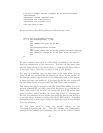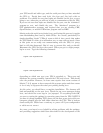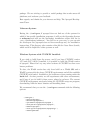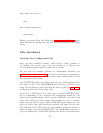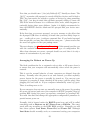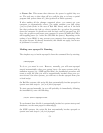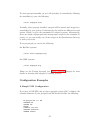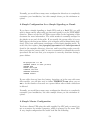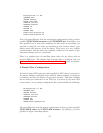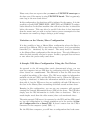Normally you would have many more configuration directives to completely
customize your installation, but this example shows you the minimum re-
quired.
A Simple Configuration for a Simple Signaling or Dumb
If you have a simple signaling or dumb UPS such as a BackUPS, you will
need to know exactly what cable you have and specify it on the UPSCABLE
directive. Please see the list of UPSes versus cables in the beginning of this
document for more information. The cable number is normally stamped in
the plastic at one end of the cable. If you specify the wrong cable, it is very
likely that at the first power failure, your computer will be immediately shut-
down. This is an unfortunate consequence of the dumb signaling mode. To
avoid this, first replace /etc/apcupsd/apccontrol with safe.apccontrol
found in the examples directory, then test until everything works correctly.
Once you have the correct cable, be sure to remember to reinstall the correct
apccontrol file and test that your computer is correctly shutdown during a
power failure.
## apcupsd.conf v1.1 ##
UPSCABLE (number of cable you have)
UPSTYPE dumb
DEVICE /dev/ttyS0
LOCKFILE /var/lock
UPSCLASS standalone
UPSMODE disable
If your cable does not have low battery detection, as is the case with some
older models, you will also need to define TIMEOUT nnn where you set
nn to be the number of seconds on a power failure after which a shutdown
is effected.
Normally you would have many more configuration directives to completely
customize your installation, but this example shows you the minimum re-
quired.
A Simple Master Configuration
You have a Smart UPS using the cable supplied by APC and you want it to
act as a master for another computer, which is powered by the same UPS.
A very simple configuration file would look like the following:
54



